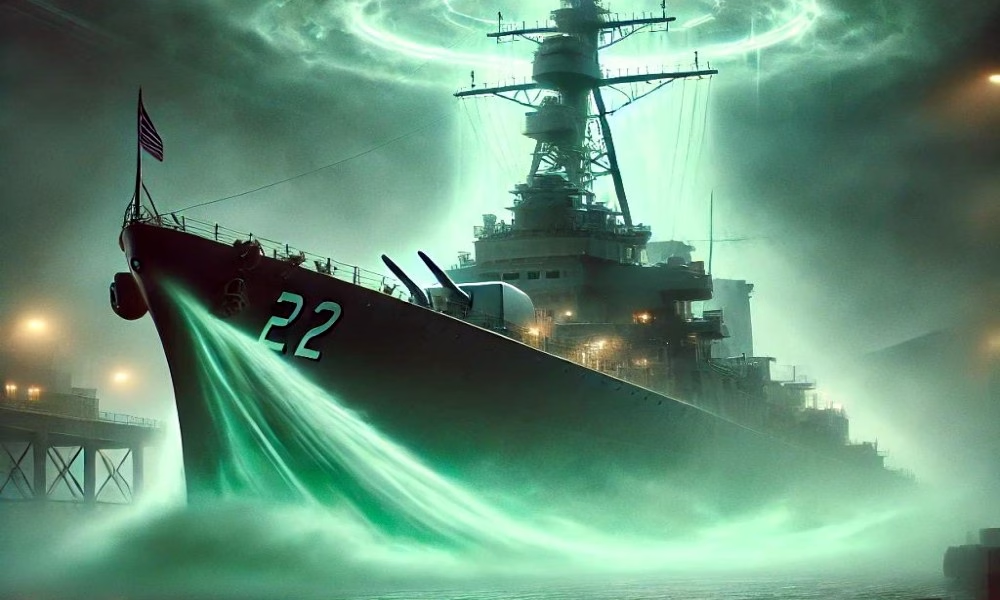
According to legend, in 1943, the U.S. Navy conducted a secret experiment at the Philadelphia Naval Shipyard where they attempted to make the USS Eldridge, a destroyer escort, invisible to enemy radar. But things supposedly went very wrong. Witnesses claimed the ship didn’t just vanish from radar — it literally disappeared in a greenish haze, teleported to Norfolk, Virginia, and back, and when it reappeared, some crew members were fused into the ship’s metal hull. Others went insane, while a few simply vanished forever.
The Philadelphia Experiment story exploded into public consciousness in the 1950s when Carl M. Allen (using the alias “Carlos Allende”) sent letters to UFO writer Morris K. Jessup, detailing what he claimed to have seen. Jessup took the bait and started investigating, even though he would later regret it — his career and personal life unraveled, culminating in his death by suicide in 1959.
Meanwhile, the myth took on a life of its own, fueled by Cold War paranoia, the rise of conspiracy culture, and popular media. The 1984 movie The Philadelphia Experiment and countless TV specials kept it alive, ensuring new generations would wonder whether the Navy had accidentally discovered teleportation — or ripped a hole in the fabric of space-time.
Today, the Philadelphia Experiment is a classic cautionary tale of how fringe stories grow. Actual Navy records show the USS Eldridge wasn’t even in Philadelphia at the time, but docked elsewhere. Many “witnesses” came forward decades later with contradictory or impossible details. As for the science? Making a ship “invisible” would require manipulating light or radar, technologies that even now are only partially achievable with “stealth” technology — a far cry from literal disappearance.
Still, the story taps into deep fears about secret government experiments, uncontrolled technology, and scientific hubris. It’s not about whether it happened — it’s about what it represents.
Important Facts, People, and Ideas:
- Carlos Allende (Carl M. Allen): The main (and extremely unreliable) source for the original Philadelphia Experiment claims.
- Morris K. Jessup: UFO writer who believed Allende’s claims, later publishing The Case for the UFO.
- USS Eldridge: The ship at the center of the myth, which had a normal, boring service record according to military logs.
- De-gaussing: One real Navy experiment that may have sparked the rumors; it involved reducing ships’ magnetic fields to protect them from mines, not teleportation.
Fun Fact: In the 1990s, the U.S. Navy had to officially respond to public inquiries about the Philadelphia Experiment, flatly denying it ever took place — proof that once a conspiracy theory catches on, it’s harder to kill than a horror movie.




